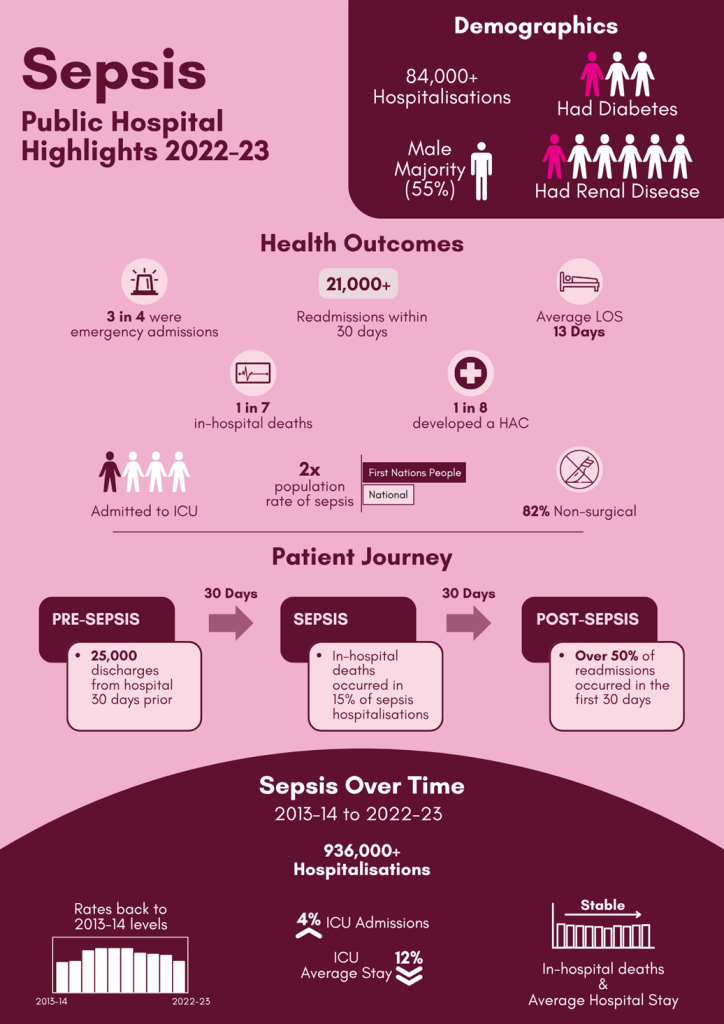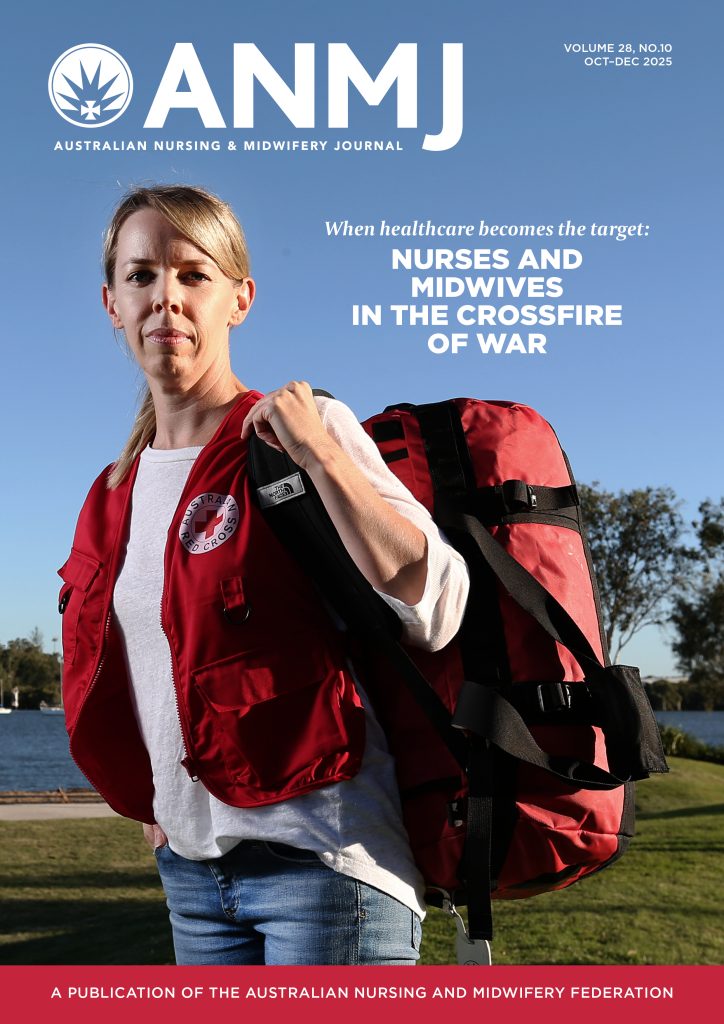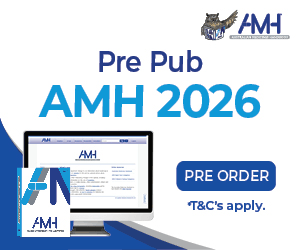A decline in the proportion of sepsis-related deaths occurring in emergency departments suggests the growing impact of sepsis education and pathways, reveals a new report released ahead of World Sepsis Day tomorrow.
The landmark report released for World Sepsis Day, 13 September 2025, reveals that sepsis is more prevalent, deadly and costly than previously understood.
Published by the Australian Commission on Safety and Quality in Health Care (the Commission), the Sepsis Epidemiology Report analysed over 900,000 sepsis-related hospitalisations in Australian public hospitals from 2013–14 to 2022–23.
In 2022–23 alone, there were over 84,000 sepsis hospitalisations and more than 936,000 hospitalisations over the 10-year reporting period – significantly greater than the previous estimate of 55,000 people affected each year.

Renewed calls to improve early detection, data quality and clinical care across the healthcare system have been prompted by the report findings.
Many Australians faced not only a high risk of death, but also long recovery periods and repeat hospitalisations, said Conjoint Professor Carolyn Hullick, Chief Medical Officer of the Commission and an emergency physician.
“Sepsis is a time-critical emergency. We must do more to reduce the impact of sepsis on health services and improve patient outcomes and support health services in early recognition, treatment and discharge planning.”
The report also provided insight into a range of health and social determinant risk factors. 2022–23 figures show:
- One in three people hospitalised for sepsis also had diabetes
- One in six had renal (kidney) disease
- Sepsis hospitalisation rates for Aboriginal and Torres Strait Islander people were double that of non-indigenous people
- Higher risk of readmission linked to rural location and socioeconomic disadvantage.
The data provided a clearer picture of those most at risk and how to intervene earlier, said Conjoint Professor Hullick. “The link between complex chronic illness, socioeconomic disadvantage and higher rates of sepsis must shape how we deliver care.”
The report also found promising signs of progress, with a decline in the proportion of sepsis-related deaths occurring in emergency departments. This suggested a growing impact from sepsis clinical pathways and education.
The Commission’s new report builds on work under the National Sepsis Program and supports the development of a National Sepsis Data Plan to improve consistency in coding and documentation.
The full report is now available on the Commission’s website here








